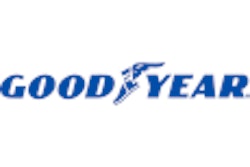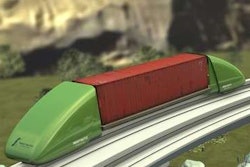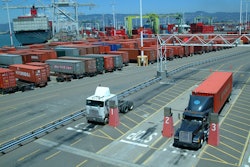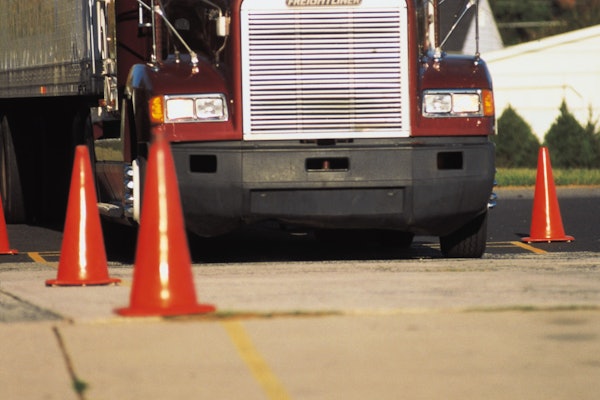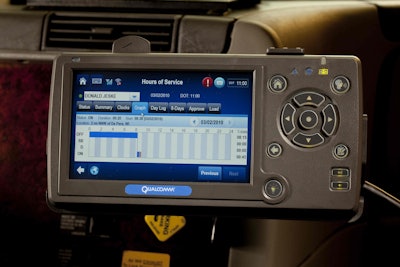
Carrier representatives already utilizing EOBRs expressed support of the effort of a broader mandate, while owner-operators urged FMCSA to consider existing, more affordable alternatives to hours enforcement and address the root causes of hours noncompliance.
Owner-operator and 2010 Goodyear Highway Hero award winner Tilden Curl mentioned reports from fellow drivers who’ve seen real-time back-office hours manipulation firsthand. When sharing lack of hours to complete a particular haul with dispatch, sufficient hours “magically” appear in their EOBR, Curl said. “An EOBR is best suited as a management tool, rather than an enforcement tool for officers.”
He offered the example of Washington and Oregon’s weigh station cameras. Combined with software that interprets images to record truck information, the systems “provide time-stamped records of travel [and] give you valid information that is not doctored in any way,” said Curl. “It’s a system that works.”

Curl cited an hours-enforcement blitz last Fall he saw firsthand in Washington, his home state. “They nearly filled the weigh station with trucks.”
Giving inspectors around the nation the resources to use such tools would be an effective deterrent to hours scofflaws and would allow the agency to effectively bypass the privacy concerns Curl and others see in EOBRs. “Any company that wants to invest in EOBRs should be able to do so,” said Curl, but he could see little safety or compliance benefit for a nationwide mandate “beyond what the west coast systems have done.”
Werner Transportation company driver Tim Dean said he has been operating under some form of automated hours monitoring for the entirety of his 23-year, 3-million-mile-plus safe driving career. “I believe the perception [among drivers] of EOBRs is negative,” he said, “but over the years, they’ve become a bigger asset to me.” He cited the dispatch/trip-planning efficiency the devices help enable as a tool to actually mitigate “harassment during off hours.”
Dean was echoed by Schneider National representative Andrea Sequin, who testified that, following the carrier’s first full year of EOBR implementation, drivers called the EOBR a “pressure-release valve” of sorts. Pressure to run beyond endurance limits, she added, “is more likely in the paper log environment.” The carrier has also seen a 70 percent decline in fatigue-related crashes following EOBR implementation and a modest productivity and on-time service decline, Sequin reported.
Prime Safety Director Don Lacy, participating in the webcast session, concurred with Sequin, noting that the fleet continually polls its drivers about its EOBRs and the harassment issue. “With EOBRs you have total transparency,” he noted. “Drivers and operations have the same information.”
Under questioning from FMCSA, however, driver Dean noted that it was currently impossible for him to retain communication from dispatch through his Qualcomm unit for any extended period of time without retrieving it from the carrier back office. “In the future we’ll be able to print off of” the unit, he said. “Now, if I want to retain it…I have to keep it on the screen.” Dean added that, however, “I’ve never had a need to.”
Landstar-leased owner-operator George Sherveny echoed many commenters submitting testimony via the webcast when he urged FMCSA to focus on the problem of excess detention at shipper and receiver facilities, which often forces drivers to violate hours to find a parking space. FMCSA reps said they were working on “research” into the problem of excess detention, but Sherveny said that they ought to go farther than that: he called the shipper/receiver detention problem one of the most important harassing factors for drivers. “I believe it is important for FMCSA to formulate regulations that prevent this kind of harassment,” he said.
The session was the second conducted after a court of appeals in 2011 vacated an EOBR final rule that would have required the devices for certain hours noncompliant carriers as a remedial measure. The driving factor in the decision was FMCSA’s failure to consider the harassment issue. The issue was also debated in February by the FMCSA’s Motor Carrier Safety Advisory Committee.
RELATED:
Court of Appeals denies OOIDA’s EOBR request
Owner-operators deliver in MATS EOBR listening sessions
FMCSA asks court to exclude recorder use survey
ATA sides with agency over use of electronic logs
EOBR report addresses driver harassment




